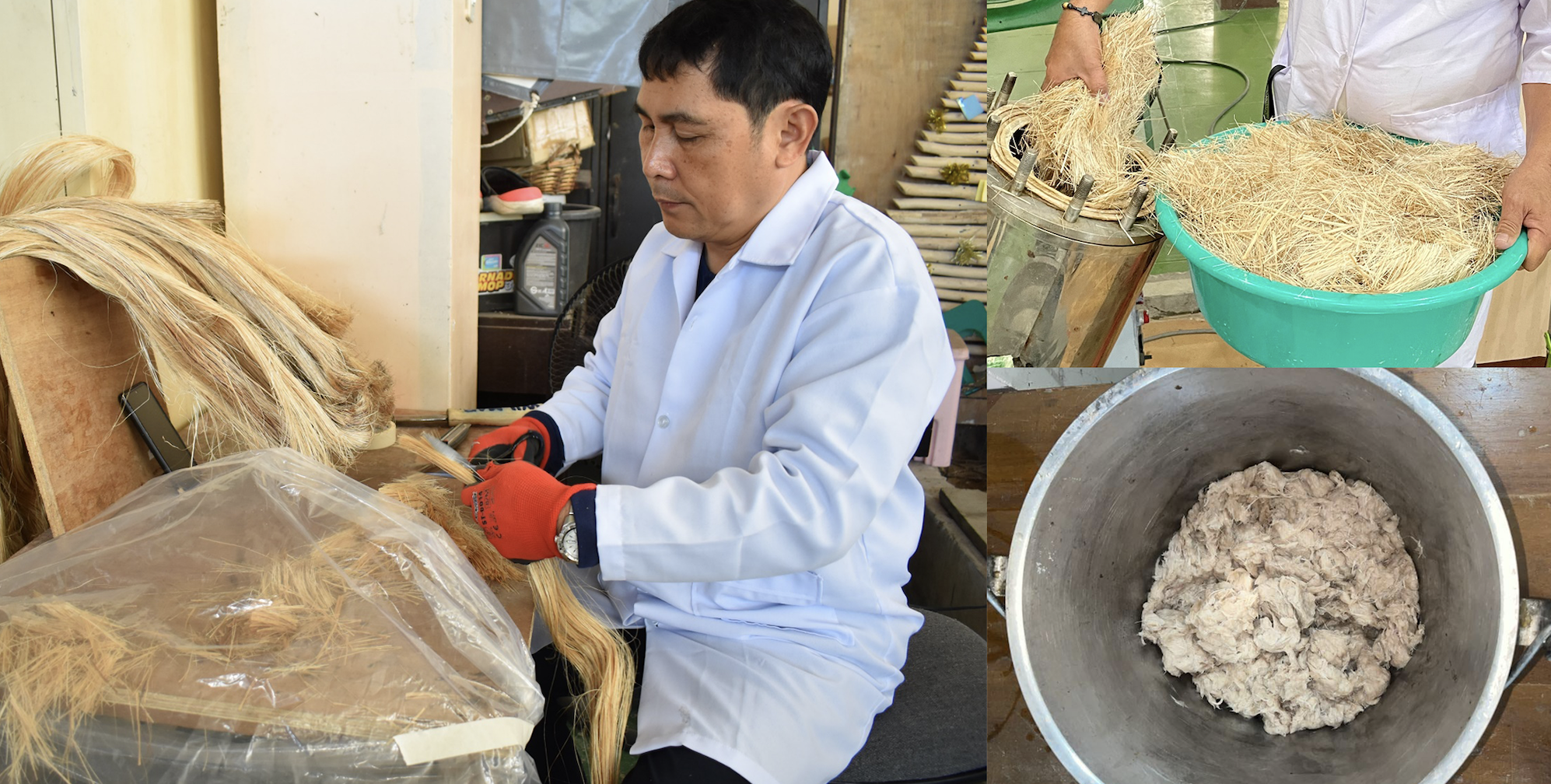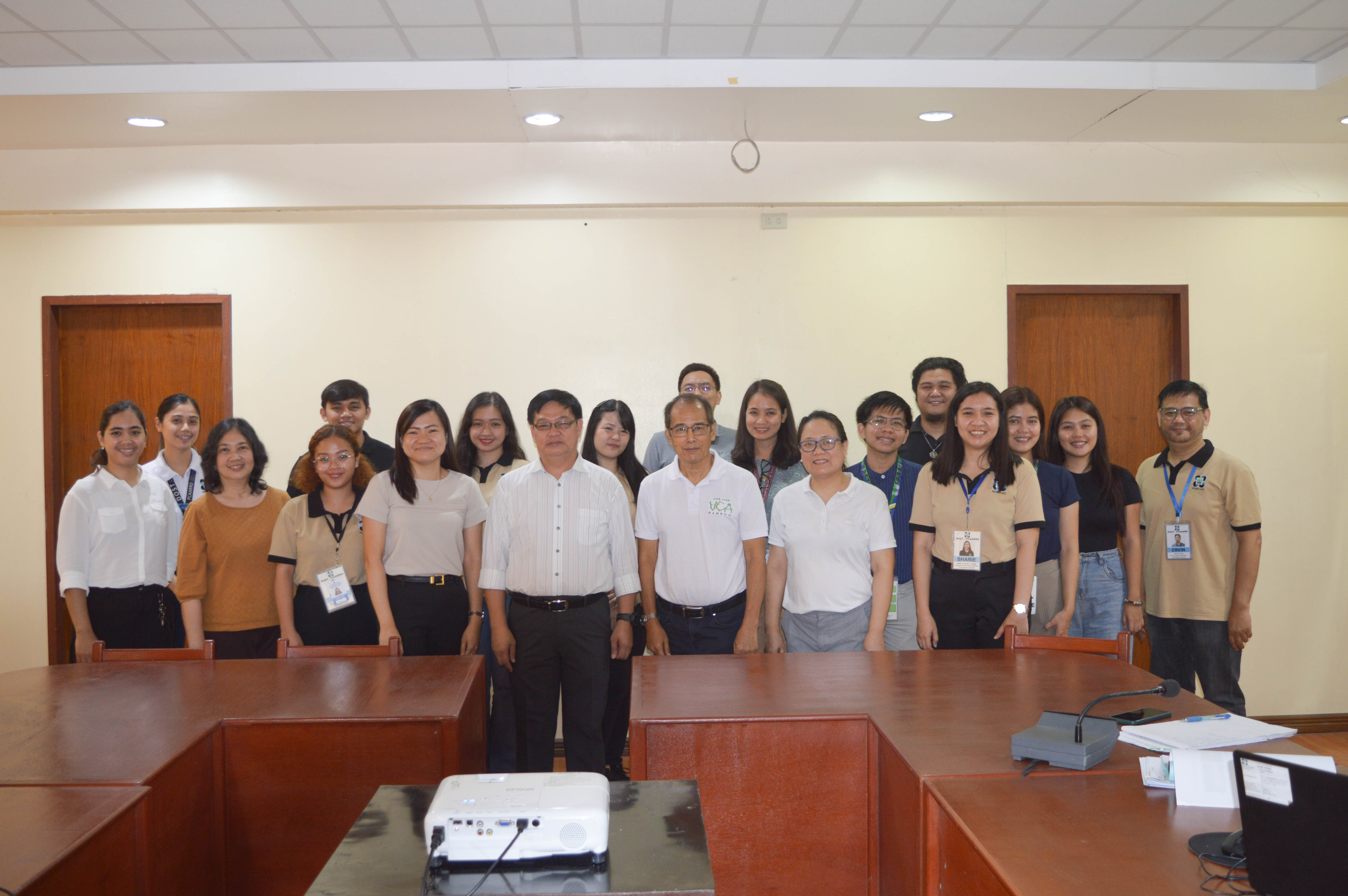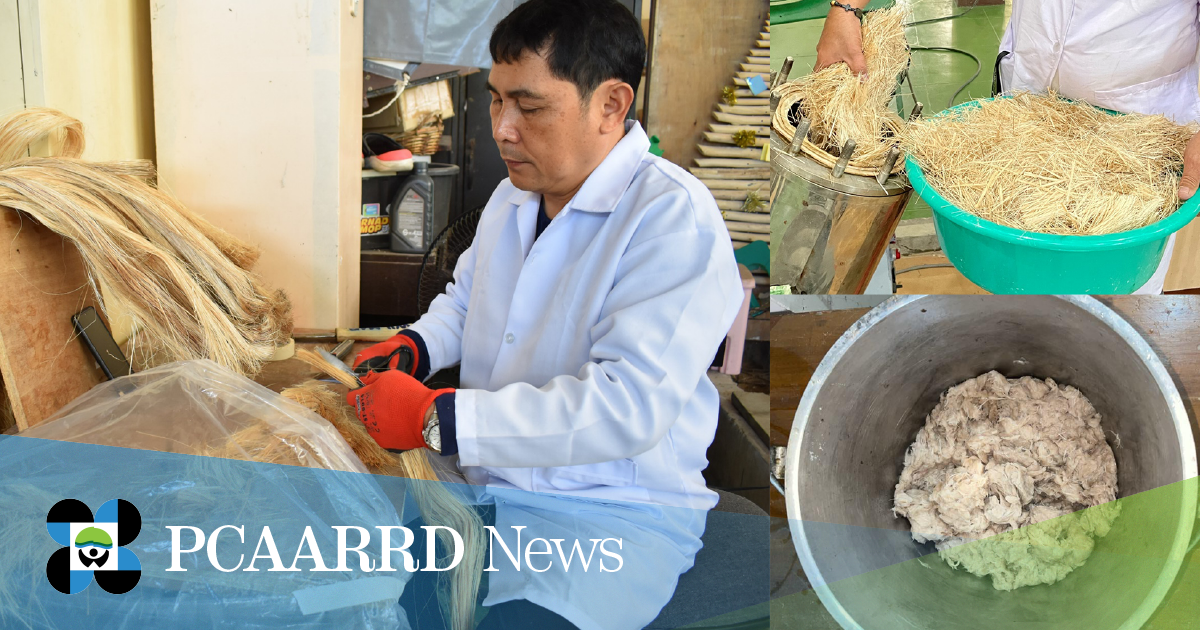An abaca hybrid is being tested by multiple laboratories to confirm its suitability for pulp and papermaking.
With nearly 80% of locally produced abaca manufactured for pulp production, the Philippine Council for Agriculture, Aquatic and Natural Resources Research and Development of the Department of Science and Technology (DOST-PCAARRD) continues to strengthen its research initiatives in boosting its production and developing value-added products from new alternative hybrids such as the Backcross Abaca with Native and Desirable Accessions to Lift Up the Abaca Industry (BANDALA).
BANDALA is an abaca hybrid, which shows resistance to the abaca bunchy top virus (ABTV)—a longstanding problem in the local abaca industry since 1915. It is developed by the University of the Philippines Los Baños (UPLB).

Pulping of the BANDALA abaca hybrid conducted by DOST-FPRDI. (Image credit: DOST-FPRDI)
To determine BANDALA’s physical and chemical properties and optimize its ability for pulping and paper-making process, the DOST-Forest Products Research and Development Institute (FPRDI) is implementing the project “Inter-Laboratory Pulping and Paper Making Analysis of BANDALA (Backcross Abaca with Native and Desirable Accessions to Lift Up the Abaca Industry) Abaca Hybrid” through the funding and support of DOST-PCAARRD.
According to Project Leader Aimee Beatrix R. Habon, initial laboratory data indicate that BANDALA fibers are “extremely long” and have “thin-to-thick” cell walls. The fibers also show favorable characteristics in terms of slenderness and flexibility. Chemical property analysis, such as percent ash content, holocellulose, lignin, solvent extractives, hot water solubility, and sodium hydroxide also suggest that BANDALA fibers have potential as raw material in pulping and paper making.

Attendees of the annual project review of the project, “Inter-Laboratory Pulping and Paper Making Analysis of BANDALA (Backcross Abaca with Native and Desirable Accessions to Lift Up the Abaca Industry) Abaca Hybrid.” (Image credit: CRD, DOST-PCAARRD)
These promising results will be validated by UPLB and the Tianjin University of Science and Technology (TUST) of China, which will also conduct laboratory tests on the pulp handsheets produced from said fibers.
During a project review conducted by DOST-PCAARRD’s Crops Research Division (CRD), S&T Consultant Ramon A. Razal highlighted the significance of the statistical analysis that will be used to compare the data from the three laboratories. He also recommended testing the storage period of BANDALA fibers and reviewing other studies on the pulp and papermaking properties of other local abaca varieties to provide a more comprehensive understanding of the results.
The review was attended by representatives from DOST-FPRDI, UPLB, and DOST-PCAARRD led by Deputy Executive Director for Research and Development (R&D) Juanito T. Batalon, CRD Assistant Director Sharie Al-Faiha A. Lubang, and Industry Strategic S&T Program (ISP) Manager for Abaca Kristine Joy P. de Guzman.

